
SPECTROSCOPY
Scope & Guideline
Transforming Knowledge into Spectroscopic Solutions
Introduction
Aims and Scopes
- Spectroscopic Techniques and Applications:
The journal covers a wide range of spectroscopic methods, including Raman, IR, UV-Vis, and atomic spectroscopy, focusing on their applications in fields like pharmaceuticals, environmental science, and materials characterization. - Analytical Chemistry Innovations:
It emphasizes advancements in analytical chemistry, highlighting innovative approaches in sample analysis, method development, and instrumentation, thereby contributing to improved accuracy and efficiency in chemical analysis. - Interdisciplinary Research:
The journal encourages interdisciplinary studies that integrate spectroscopy with other scientific domains, such as biology, materials science, and environmental science, promoting a holistic approach to research. - Emerging Technologies and Trends:
'SPECTROSCOPY' frequently explores emerging technologies and methodologies in spectroscopy, including machine learning applications, portable devices, and real-time analysis, addressing contemporary challenges in the field. - Educational Insights:
The journal also provides educational content, including reviews and tutorials, to enhance knowledge and skills in spectroscopy among researchers and practitioners.
Trending and Emerging
- Machine Learning and AI Applications:
There is a significant increase in papers discussing the integration of machine learning and artificial intelligence in spectroscopic analysis, showcasing their potential to enhance data interpretation and predictive modeling. - Portable and Miniaturized Spectroscopic Devices:
The trend towards developing portable spectroscopic devices is on the rise, driven by the need for on-site analysis in fields such as environmental monitoring and forensic science. - Real-Time and In-Situ Monitoring:
Research focused on real-time and in-situ monitoring applications of spectroscopy is gaining traction, particularly in industrial processes and bioprocessing, highlighting the demand for timely data acquisition. - Sustainable and Green Chemistry Applications:
The journal is increasingly publishing studies that explore the role of spectroscopy in sustainable practices and green chemistry, emphasizing environmental impact and resource efficiency. - Biomedical Applications and Diagnostics:
There is a growing emphasis on the use of spectroscopy in biomedical applications, particularly for diagnostics and monitoring of diseases, reflecting the intersection of healthcare and analytical chemistry.
Declining or Waning
- Traditional Spectroscopy Methods:
There has been a notable decline in publications centered on traditional spectroscopy methods that lack innovative approaches or applications, as researchers increasingly favor advanced and hybrid techniques. - Conventional Sample Preparation Techniques:
Papers focusing on outdated or conventional sample preparation methods have decreased, indicating a shift towards more efficient, automated, or non-destructive techniques that enhance analysis reliability. - Limited Focus on Basic Spectroscopy Principles:
The exploration of fundamental principles of spectroscopy has waned, with more emphasis on applied research and technology-driven studies, reflecting a trend toward practical applications over basic theoretical discussions. - Generalized Applications Across Fields:
Research that applies spectroscopy in a generalized manner across various fields without specific focus or innovation is becoming less common, as the journal seeks more targeted, impactful studies.
Similar Journals

SPECTROSCOPY AND SPECTRAL ANALYSIS
Bridging Gaps in Spectroscopy and Its ApplicationsSPECTROSCOPY AND SPECTRAL ANALYSIS is a pivotal journal published by the OFFICE SPECTROSCOPY & SPECTRAL ANALYSIS in China, dedicated to advancing the field of spectroscopy and its associated techniques. With an ISSN of 1000-0593, this journal provides a platform for researchers, professionals, and students to disseminate innovative studies and findings related to spectroscopy, covering various applications from fundamental research to technological advancements. Although it currently stands in the Q4 quartile for both Instrumentation and Spectroscopy as per the 2023 categorization, it continues to play a crucial role in fostering dialogue and collaboration within the scientific community. The journal features contributions that explore the latest methodologies and applications, making it a valuable resource for those aiming to deepen their understanding and application of spectroscopic techniques. It operates within a competitive landscape, ranked at the 16th percentile in Chemistry (Spectroscopy) and 15th percentile in Physics and Astronomy (Instrumentation), which underscores its targeted influence in these fields. Interested readers can access the journal to stay informed about pioneering research, helping to bridge the gap between theoretical insights and practical applications.
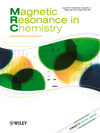
MAGNETIC RESONANCE IN CHEMISTRY
Transforming Research with Cutting-Edge Magnetic Resonance StudiesMAGNETIC RESONANCE IN CHEMISTRY, published by Wiley, is a prominent journal dedicated to the advancement of knowledge in the field of magnetic resonance as applied to chemistry and materials science. With an ISSN of 0749-1581 and an E-ISSN of 1097-458X, this journal has been an essential resource for researchers since its inception in 1985, maintaining its reputation as a leading publication through its converged years up to 2024. Spanning diverse topics, the journal holds a Q2 quartile ranking in both the Chemistry (miscellaneous) and Materials Science (miscellaneous) categories, illustrating its significance in the academic community. With Scopus rankings placing it in the 61st percentile for General Chemistry and the 55th percentile for General Materials Science, this journal is an esteemed platform for original research, reviews, and critical discussions surrounding magnetic resonance methodologies and applications. As access options are not open, it ensures a curated dissemination of high-quality, peer-reviewed content to support professionals, researchers, and students in their scholarly endeavors.
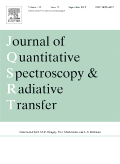
JOURNAL OF QUANTITATIVE SPECTROSCOPY & RADIATIVE TRANSFER
Illuminating the path of quantitative research in spectroscopy.JOURNAL OF QUANTITATIVE SPECTROSCOPY & RADIATIVE TRANSFER is a prestigious academic journal published by PERGAMON-ELSEVIER SCIENCE LTD that serves as a leading forum for advancements in the fields of atomic and molecular physics, optics, and spectroscopy. With a commitment to publishing high-quality research since its inception in 1961, this journal has consistently contributed significant insights, furthering our understanding of the interactions between light and matter. Currently holding a Q2 ranking in Atomic and Molecular Physics and Optics, and Q1 in Radiation, this journal ensures a robust platform for researchers aiming to disseminate their findings and collaborate in this evolving field. With rigorous peer-review processes and a strong emphasis on quantitative methodologies, it is ideal for both emerging scholars and established professionals alike. Although it does not offer Open Access options, the journal remains an essential resource for anyone engaged in the rapidly advancing domains of quantitative spectroscopy and radiation studies.
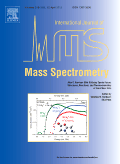
INTERNATIONAL JOURNAL OF MASS SPECTROMETRY
Unlocking the Potential of Mass Spectrometry InsightsINTERNATIONAL JOURNAL OF MASS SPECTROMETRY, published by Elsevier, is a pivotal platform in the field of mass spectrometry, advancing the understanding and application of this essential analytical technique. With an ISSN of 1387-3806 and an E-ISSN of 1873-2798, the journal has established its significance since its inception in 1998 and continues to contribute valuable insights to the scientific community through its convergence of knowledge extending to 2024. Its scope encompasses critical areas such as condensed matter physics, instrumentation, physical and theoretical chemistry, and spectroscopy, earning recognition across various ranks and quartiles, specifically holding a Q3 classification in multiple categories for 2023. Although it does not currently operate under an open access model, the journal remains an essential resource for researchers, professionals, and students striving to deepen their expertise and stay abreast of the latest methodological developments and discoveries in mass spectrometry. With its commitment to quality and innovation, the INTERNATIONAL JOURNAL OF MASS SPECTROMETRY plays a crucial role in supporting advancements in analytical chemistry and instrumental analysis.

ANALYTICAL AND BIOANALYTICAL CHEMISTRY
Advancing the Frontiers of Chemical AnalysisANALYTICAL AND BIOANALYTICAL CHEMISTRY, published by SPRINGER HEIDELBERG, is a leading international journal that serves as a vital platform for innovative research in the fields of analytical and bioanalytical chemistry. With an impressive impact factor and ranking in the Q2 category for both Analytical Chemistry and Biochemistry, the journal highlights key advancements and methodologies that drive the discipline forward. Established in 1996 and continuing vigorously into 2024, it has gained significant recognition with Scopus rankings placing it in the 83rd and 78th percentiles within its categories, underscoring its impact and relevance. The journal's commitment to open access facilitates widespread dissemination of critical scientific knowledge, making it an essential resource for researchers, professionals, and students dedicated to exploring the complexities of chemical analysis. With its base in Heidelberg, Germany, ANALYTICAL AND BIOANALYTICAL CHEMISTRY continues to inspire and influence the global research community.

OPTICS AND SPECTROSCOPY
Advancing Knowledge in Atomic and Molecular PhysicsOptics and Spectroscopy is a pivotal peer-reviewed journal published by Pleiades Publishing Inc, focusing on the intricate fields of atomic and molecular physics, as well as optics. Established in 1972, and enjoying a legacy of convergence periods that reinforce its commitment to the evolving landscape of these scientific domains, the journal aims to disseminate high-quality research that advances our understanding of light-matter interactions, electronic materials, and spectroscopic techniques. Despite its current Q4 categorization in both the Atomic and Molecular Physics and Electronic, Optical and Magnetic Materials fields, with corresponding Scopus rankings reflecting its developing influence, the journal remains a valuable resource for researchers and professionals seeking to publish their findings, explore new methodologies, and connect with a community dedicated to innovation in optics. Although there is currently no open access option, the journal's expansive readership and its stability in publication over the decades make it an important platform for both established and emerging researchers in the field.
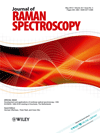
JOURNAL OF RAMAN SPECTROSCOPY
Bridging theory and practice in Raman spectroscopy research.JOURNAL OF RAMAN SPECTROSCOPY, published by WILEY, is a leading journal dedicated to advancing the field of Raman spectroscopy and its applications across diverse scientific disciplines. With an impact factor reflective of its esteemed reputation, this journal positions itself in the Q2 category for both Materials Science and Spectroscopy in the 2023 rankings, demonstrating its relevance and contribution to these fields. Since its inception in 1973, it has consistently provided a platform for innovative research, offering valuable insights and methodologies to researchers, professionals, and students alike. The journal caters to a global audience and includes peer-reviewed articles that encapsulate groundbreaking findings and evolving trends in spectroscopy, enriching our understanding and implementation of this vital analytical technique. While it does not offer Open Access options, its content is accessible through institutional subscriptions, ensuring broad dissemination in the scientific community. By bridging theoretical knowledge and practical applications, the JOURNAL OF RAMAN SPECTROSCOPY plays a pivotal role in shaping the future of materials analysis and characterization.
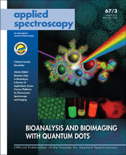
APPLIED SPECTROSCOPY
Catalyzing Insights in Spectroscopy and BeyondApplied Spectroscopy, published by SAGE Publications Inc, is a leading journal in the field of spectroscopy and instrumentation, with a legacy dating back to 1970. This esteemed journal, recognized within the Q2 category for both Instrumentation and Spectroscopy in 2023, provides critical insights and advancements that cater to a wide audience of researchers, professionals, and students. With its Scopus rankings placing it in the top 20% of publications in its respective fields, Applied Spectroscopy stands out for its rigorous peer-reviewed content that drives innovation in analytical techniques and applications. Though not an open-access publication, readers can access a wealth of research articles, reviews, and experimental findings that enrich the scientific discourse in spectroscopy. With a focus on enhancing the understanding and practical applications of spectroscopy, this journal is an essential resource for anyone engaged in this dynamic and evolving discipline.

JOURNAL OF PHYSICAL CHEMISTRY B
Advancing the Frontiers of Physical ChemistryJournal of Physical Chemistry B, published by the American Chemical Society, is a leading international platform dedicated to advancing our understanding of physical chemistry and its applications in various interdisciplinary fields. With an impressive 2023 Impact Factor, and categorized in Q1 for Physical and Theoretical Chemistry as well as Surfaces, Coatings and Films, this journal showcases cutting-edge research that contributes significantly to materials science, supporting the innovative development of new materials and technologies. The journal, established in 1997 and converging its years of publication to 2024, maintains rigorous peer-review standards and is accessible to a global audience, enabling the dissemination of pivotal research findings. Moreover, it is renowned for its comprehensive coverage in the realms of materials chemistry and miscellaneous medical applications, making it a vital resource for researchers, professionals, and students alike in their pursuit of excellence in scientific inquiry.

MASS SPECTROMETRY REVIEWS
Your Gateway to Premier Research in Mass SpectrometryMASS SPECTROMETRY REVIEWS, published by Wiley, is a premier academic journal dedicated to advancing the field of mass spectrometry and its applications across a multitude of scientific disciplines. With an ISSN of 0277-7037 and an E-ISSN of 1098-2787, the journal has established itself as a vital resource within the realms of Analytical Chemistry, Biochemistry, Genetics, Condensed Matter Physics, and Spectroscopy, achieving Q1 status across these categories in 2023. As a testament to its significant contribution to scholarly research, it boasts impressive Scopus rankings, including a rank of #2 out of 76 in Chemistry - Spectroscopy and #4 out of 156 in Chemistry - Analytical Chemistry, placing it in the 97th percentile and above. Emphasizing high-quality, peer-reviewed research, MASS SPECTROMETRY REVIEWS serves as an essential platform for researchers, professionals, and students aiming to stay abreast of cutting-edge developments and methodologies in mass spectrometry. The journal is committed to fostering a deeper understanding of mass spectrometric techniques while also contributing to interdisciplinary advancements, making it a valuable addition to any academic library. Authors seeking to disseminate their work in a journal with a strong reputation and impact in the scientific community will find MASS SPECTROMETRY REVIEWS an ideal venue.